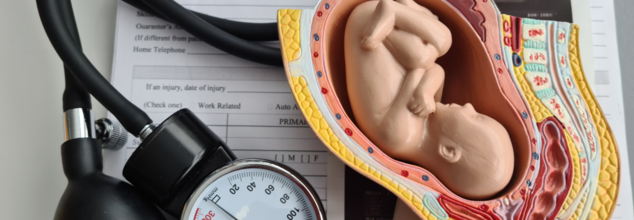- Health Conditions A-Z
- Health & Wellness
- Nutrition
- Fitness
- Health News
- Ayurveda
- Videos
- Medicine A-Z
- Parenting
- Web Stories
COVID-19 Cases In India Continue To Surge, Kerala Tops The List

Credits: Canva
COVID-19 cases in India continue to rise, the numbers have now touched 3,758. Kerala, the southern-most state in India has reported the highest of the cases, leading with 1,400 cases, followed by Maharashtra with 506 cases.
On Saturday, the Union Health Ministry released a data, which registered 685 more active cases, another data was released on Sunday, which reported 360 new infections, which had been recorded within 24 hours.
Apart from that, two COVID-19 deaths were also reported during the same time, in Kerala and Karnataka. In Karnataka, a 63-year-old man who had comorbidities including pulmonary TB, squamous cell carcinoma of buccal mucosa, and was also tested positive for COVID-19, passed away. While in Kerala, a 24-year-old woman with COVID-19 and pre-existing conditions like sepsis, hypertension, and decompensated chronic liver disease (DCLD) also passed away, reported the Health Ministry.
As per the Ministry of Health and Family Welfare figures, in the last 24 hours, Kerala reported 64 new cases, Maharashtra reported 18, while Delhi reported 61 new cases.
India Impacted By COVID-19
In Delhi, a 60-year-old woman who had been tested positive with COVID-19 also passed away, as per the official. This has also marked the first death in the capital during the current wave. The woman is said to have undergone surgery for intestinal obstruction, and incidentally found out that she was also COVID-19 positive.
Gurugram too reported a spike in COVID-19 cases after two and a half years. Dr Alka Singh, who is the Civil Surgeon also urged people to not ignore flu-like symptoms. From the cases reported earlier, it has been found that people who had been suffering from flu were in fact, COVID-19 positive.
Four new Covid-19 cases were reported in Gurugram on Sunday, bringing the total during the current surge to 23, with 12 active cases. All patients have mild symptoms and are isolating at home. The health department collected 97 samples for testing the same day.
Maharashtra reported 65 new Covid-19 cases on Sunday, bringing the total since January 1 to 814. Pune accounted for 31, Mumbai 22, Thane nine, Kolhapur two, and Nagpur one. The state currently has 506 active cases, with 300 recoveries so far, according to the health department.
ALSO READ: India Records 3,395 Active COVID-19 Cases, 26 Deaths, Kerala And Maharashtra Among Worst-Hit States
In Odisha, active cases have risen to 12, all presenting mild symptoms and placed in isolation, said Nilakantha Mishra, the state’s Director of Public Health.
Andhra Pradesh’s information minister K Parthasarathi urged people to remain vigilant amid a national rise in infections, advising caution in crowded public spaces such as railway stations, bus stands, and airports.
West Bengal registered 82 new cases in the past 24 hours, taking the number of active cases in the current wave to 287. Six people were discharged after testing negative. Updated figures from the state health department are awaited.
Punjab has six active Covid-19 cases, with five reported from Ludhiana. One death has occurred. Among the infected are two children of the deceased, who are asymptomatic and in quarantine. The remaining cases include a returnee from Kerala and two individuals who had contact with travellers from high-infection states.
In view of the rising Covid-19 cases, the Karnataka government on Saturday issued an advisory urging the public to wear masks in crowded spaces, maintain physical distancing, and follow hygiene protocols.
Union minister of state for health and AYUSH, Prataprao Jadhav, assured last week that the central government is fully prepared to manage any emerging Covid-19 situation.
With Chemicals 13,000X Sweeter Than Sugar, What Are The Toxic Risks Of ‘flavoured lies’ In Teen Vaping Products?

Credits: Canva
From sleek devices masquerading as highlighters to flavor clouds drifting down school hallways, vaping has burst into a global phenomenon, particularly among teens. Although e-cigarettes were first pitched as a "healthier" alternative to smoking, recent research unearths a disturbing concoction of chemicals lurking beneath those saccharine-tasting plumes. A few are 13,000 times sweeter than sugar. Others? Acutely poisonous. With the increasing popularity of these artificial mixtures, we might be at the beginning of a new epidemic of public health one conceived by "flavoured lies.
Vaping devices currently reign supreme in the nicotine market, with more than 4.5 million constant consumers in the UK alone and countless more internationally. For teenagers, flavored disposable e-cigarettes such as "Blue Razz Ice" or "Killer Kustard" are the most common gateway. In the United States, according to a 2024 federal survey, 5.9% of middle-school and high-school students consume e-cigarettes, with the majority using flavored products.
This popularity is not by chance. The fruit, dessert, and sweet tastes cover up nicotine's bitterness and provide a sensory experience that simulates candy, soda, or gum. Some products feature artificial sweeteners such as neotame, a 7,000–13,000-fold sweeter compound than sugar. Neotame is safe for food use according to the FDA just not for inhaling. The effects of inhaling such a potent compound into sensitive lung tissue are unknown, but it's now available in almost every leading unregulated disposable vape brand.
Flavored Vape Fueling Future Diseases?
A new study in JAMA tested 11 of the top-selling disposable e-vape brands—Elf Bar, Breeze, and Mr. Fog among them—and detected neotame in each and every one of them. What's more, the sweeteners were found even in vapes labeled "zero nicotine" or those with analogs, providing them with an even wider, youth appeal.
Scientists employed AI neural networks to model what occurs with the 180 flavor chemicals known when e-liquids are exposed to heat within a vape. The outcome? Alarming.
High temperatures cause dozens of new, toxic substances to emerge—most of which aren't even included in any label. These include:
- 127 "acutely toxic" substances
- 153 "health hazards"
- 225 "irritants
These byproducts contain volatile carbonyls (VCs), a family of chemicals that have been shown to destroy the lungs and cause cancer. These were most prevalent in the fruit- and dessert-flavored versions the same versions that control youth tastes.
Though the FDA has approved just 34 e-cigarettes, all restricted to menthol or tobacco flavors, the other 86% of the U.S. vaping market contains technically illegal flavored products yet widely dispensed at convenience stores and gas stations. They are largely made in China, where flavored vapes were outlawed on the domestic market in 2022, pushing exports into overseas markets such as the United States.
The Supreme Court recently upheld the FDA's refusal to approve flavored vape applications on the grounds of their irresistible attraction to young consumers. But in reality, enforcement is still fragmented and non-functional, with illegal, flavored vapes falling through the cracks and into the backpacks of children.
Why is it Particularly Dangerous for Teenagers?
The adolescent brain is particularly vulnerable to nicotine's impact, and specialists say that early exposure through vaping can have profound and long-lasting effects. Nicotine has been shown to modify the formation of neural pathways in teenagers, raising the likelihood of long-term dependence, diminishing cognitive ability and attention span, and even leading to mood disorders. There is also increasing worry that vaping is a gateway, that it's getting young people to move on to traditional smoking or to other drugs. But the threat is more than nicotine. Numerous youths who have never smoked are now regularly breathing in a mix of up to 180 chemical flavorings found in flavored vapes. These e-liquids include a combination of more than 180 flavoring chemicals, some of which were initially intended for consumption not inhalation.
When heated, they can transform into entirely new compounds, the health impacts of which are not yet fully understood. Unlike tobacco, which took decades to definitively link to lung cancer and heart disease, vaping is introducing unregulated, high-temperature chemicals into young lungs, creating a public health challenge whose full effects may only be known years from now. Most of the 180 flavor chemicals found in e-liquids are derived from the food industry. There, they are safe to consume. But inhale and heat them? A whole other story.
Chemicals such as diacetyl, which is characterized by its "buttery" taste, have already been associated with popcorn lung a serious but unusual type of lung disease. Researchers now fear that a series of long-term diseases will become reality in the next few decades as a result of extended exposure to vaping, particularly among individuals who started smoking e-cigarettes in their teens.
The inconsistency of vaping products also adds to the confusion. Variations in the design of batteries, temperature control, and e-liquids ensure that no two puffs are identical, so the health concerns become even more uncertain.
The charm of sweet, dessert-like vapes might seem innocent even exciting to some average teen but at the back of those flavors are chemicals never meant to be inhaled, and which could lead to health issues years later.
Trump Administration's Ban On Emergency Abortion Could Jeopardize Women’s Health

Credits: Canva
As legal battles around abortion continue in the United States, the Trump administration has announced plans to revoke federal guidance that currently protects access to emergency abortions in hospitals. The move targets a 2022 directive from the Biden administration that was rooted in the Emergency Medical Treatment and Active Labor Act (EMTALA)—a federal law that mandates emergency care, including when pregnancy complications threaten a woman’s life.
This potential reversal is more than a political maneuver—it could pose serious risks to patients' health and further strain hospital decision-making.
What Is EMTALA and Why It Matters
Enacted in 1986, the Emergency Medical Treatment and Active Labor Act (EMTALA) requires that hospitals accepting Medicare funds must offer a medical screening exam and stabilizing treatment to any patient who arrives at the emergency room, regardless of their ability to pay.
In 2022, citing EMTALA, the Biden administration clarified that emergency abortion care falls within the scope of stabilizing treatment when a pregnancy threatens the mother’s life or health. That meant hospitals were legally obligated to provide abortions in such emergencies—even in states where abortion was otherwise banned.
The Trump administration’s proposed rollback would mean that the federal government will no longer enforce this interpretation, leaving hospitals in abortion-restrictive states with unclear guidance. In its recent statement, the Centers for Medicare & Medicaid Services claimed it would still enforce EMTALA protections, but critics argue that without explicitly including abortion care, pregnant patients may be left in legal limbo during critical medical crises.
Health Risks of Denied Emergency Abortions
When abortion is denied in life-threatening cases, the medical fallout can be devastating. Conditions like preeclampsia, ectopic pregnancy, and severe hemorrhaging often require immediate termination of pregnancy to save a woman’s life. Delay or denial can result in organ failure, long-term disability, or even death.
A 2019 study titled They Are Girls, Not Mothers underscores the gravity of forced pregnancy, especially among adolescents. It cites risks such as preterm labor and maternal death, which are significantly higher in teenagers. Globally, pregnancy and childbirth remain the leading cause of death for girls aged 15 to 19.
Additionally, survivors of sexual violence—many of them minors—often face traumatic and subpar medical treatment. In some countries, like Guatemala and Nicaragua, young rape survivors are subjected to unnecessary Caesarean sections due to a lack of provider training. These surgeries can have lifelong implications, including chronic pain, fertility issues, and psychological trauma.
Mental and Social Consequences
Beyond physical health, forced pregnancy has severe mental and emotional consequences. The Silenced Lives report found a link between forced motherhood and suicide among teenage girls. In one case, a pregnant girl named Juana from Guatemala said, “I want to die; my heart is not happy like before.”
The social implications are equally damaging. Teenage mothers are more likely to drop out of school, miss career opportunities, and fall into poverty. According to the Stolen Lives report, 33% of affected girls only reached primary education. Many are pulled out of classrooms, removed from peer groups, and pushed into adult responsibilities they are unprepared for.
A Crisis of Care
Revoking emergency abortion protections under EMTALA doesn’t just impact legal rights—it creates confusion in emergency rooms and jeopardizes patient safety. Medical staff could be forced to choose between following state abortion bans and offering life-saving care. For pregnant patients in crisis, that legal uncertainty could mean the difference between life and death.
With the Trump administration’s rollback, the future of emergency reproductive care in America remains dangerously uncertain.
New COVID Variant NB.1.8.1 Confirmed In UK: What Are The Unusual Symptoms You Must Know?

Credits: Canva
The COVID-19 pandemic may feel like a chapter we’re slowly closing, but the virus continues to evolve, reminding us that the story is far from over. A new variant of the virus, NB.1.8.1, has recently been confirmed in the United Kingdom and is steadily appearing in various parts of the world—including the United States, Australia, Thailand, and parts of Asia and North Africa. First detected in January 2025, the Omicron subvariant has now become a global phenomenon, leading health officials to release new advisories, especially for travelers.
NB.1.8.1 is a new sublineage of the Omicron family, which has been the leading group of SARS-CoV-2 variants for several years. While it initially appeared in genetic surveillance data at the beginning of 2025, confirmed cases began to emerge more noticeably by April. It has been officially declared by the World Health Organization (WHO) as a "variant under monitoring," noting its rising rate of detection and susceptibility to avoiding immunity elicited from past infections or vaccination.
Today, NB.1.8.1 accounts for around 10.7% of all sequenced infections worldwide. Seven confirmed cases have appeared in Northern Ireland alone in the UK, and experts are monitoring its spread very closely. Its increasing circulation quickly has also brought questions regarding its behavior, contagiousness, and—most particularly—its symptoms.
How Does NB.1.8.1 Spread?
Following virologists and evidence from GISAID, NB.1.8.1 could have an increased capacity to infect human cells more effectively compared to some of its Omicron ancestors. This doesn't always mean it is more severe, but it will make the variant more infectious, particularly in densely populated indoor environments or areas where immunity is low.
The WHO has underscored that variant dynamics have also changed significantly since the start of 2025. Previously prevalent strains such as XEC and LP.8.1 are now being replaced by NB.1.8.1, particularly in places such as China and Hong Kong where this subvariant has rapidly emerged as dominant.
What Makes NB.1.8.1 Symptoms Different?
Although most symptoms are similar to other COVID-19 strains, the distinguishing factor of NB.1.8.1 is that it is more likely to cause gastrointestinal symptoms. Evidence in the UK and forthcoming international data suggest an uptick in cases presenting with symptoms of:
- Diarrhea
- Constipation
- Nausea or vomiting
- Abdominal pain and bloating
- Heartburn
These symptoms, though not entirely novel to COVID-19, are increasingly being reported in NB.1.8.1 cases. This change is leading experts to encourage physicians and patients to be sensitive to digestive complaints that might otherwise be misdiagnosed as foodborne illness or a stomach bug.
Recognizing The Unusual Symptoms of NB.1.8.1
Besides gastrointestinal distress, the NB.1.8.1 variant may also exhibit a broad spectrum of respiratory and systemic symptoms:
- High temperature or chills
- Coughing that doesn't go away
- Breathing that is short
- Loss or change of smell and taste
- Sore throat
- Headache
- Aching of muscles
- Runny nose or congestion
- Fatigue
- Loss of appetite
Note that although the occurrence of uncommon gastrointestinal symptoms could be used to distinguish NB.1.8.1, the majority of cases still mimic typical presentations of COVID-19. Therefore, proper diagnosis via testing is still vital.
Is the New Variant More Dangerous?
To date, there is no indication that NB.1.8.1 causes more serious illness or greater hospitalization than other Omicron subvariants. Nevertheless, its efficiency in spreading and in exhibiting symptoms that will not necessarily lead to COVID testing is a variant to monitor.
Immunologists are most interested in how it has the ability to partially evade immunity, something which could cause more breakthrough infections within vaccinated or previously infected people.
What Are The Precautions Travelers Must Take?
For tourists, particularly to countries with an upsurge of NB.1.8.1 infections such as the US, Australia, Egypt, the Maldives, and Southeast Asia, caution is the word. Although there are no fresh travel restrictions or bans introduced, public health officials suggest a number of precautionary measures:
- Be aware of local COVID-19 guidelines at your destination.
- Bring lateral flow tests and masks, especially while moving about airports or using public transportation.
- Practise diligent hand hygiene and limit time in enclosed or crowded spaces.
- Consider COVID-specific travel insurance, covering cancellations or health emergencies abroad.
- Monitor your health and delay travel if symptomatic.
- Travelers from the UK, in particular, are being urged to remain alert and informed as NB.1.8.1 spreads in popular vacation destinations.
Even as COVID-19 has become part of the everyday background, NB.1.8.1 is a reminder that the virus remains in motion. For high-risk groups—the elderly or immunocompromised—the threat is still real, and so is the call for public health awareness.
NB.1.8.1 isn't seen as more fatal, but its spreading and uncharacteristic symptoms render it a virus that requires concern, not hysteria. It all comes down to being informed, being aware of symptoms, particularly those that may sense unusual and taking preventative health care when abroad or ill.
© 2024 Bennett, Coleman & Company Limited

